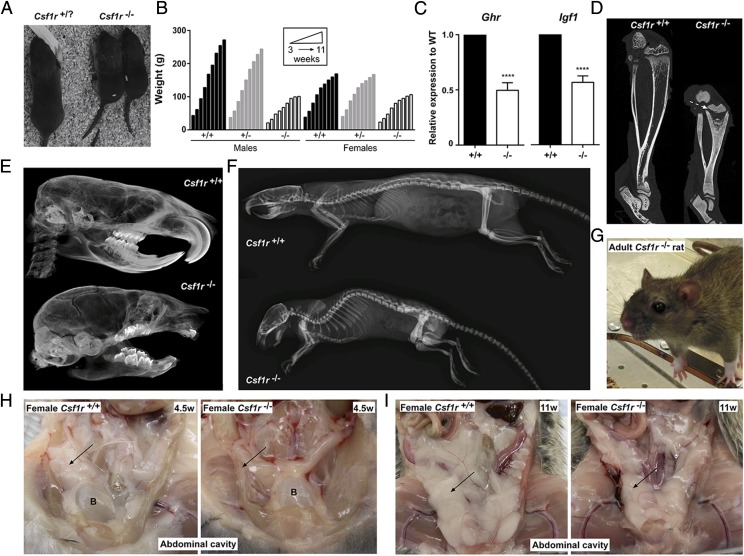FIGURE 2.
Gross phenotype of Csf1r−/− rats. (A) Two Csf1r−/− rat pups and a littermate control at postnatal day 11. (B) Rats were weighed weekly following weaning at P21. For males, n = 5+/+, 8+/−, and 3−/−. For females, n = 7+/+, 4+/−, and 8−/−. Animals culled prior to 11 wk of age were included in the analysis. Graph shows the mean + SEM. (C) Total RNA was isolated from livers of wild type (+/+) and Csf1r−/− rats (n = 6) for analysis of Ghr and total Igf1 expression via qRT-PCR. There were equal numbers of males and females, four animals were adults, and two were 18 d old in each group. Graph shows the mean + SEM for pairwise comparison with age- and sex-matched littermate controls. Absolute values did not differ markedly between males and females or ages. Significance compared with wild type is indicated by ****p < 0.0001 using a t test. (D) Lower limbs from 7-wk males were fixed in 10% buffered formalin and analyzed for bone density by μCT. Dotted arrow indicates growth plate. (E) Skulls from 7-wk males were scanned by μCT. (F) Rats were analyzed by radiography at 6 mo of age. μCT images are from females, which are representative of both sexes. (G) An adult female Csf1r−/− rat with bulging eyes. Representative photograph of the abdominal cavities of 4.5-wk-old (H) and 11-wk-old (I) females. Arrow points to visceral fat in the wild type (left) and absence or reduction of visceral fat in Csf1r−/− rat (right). Images are also representative of males. B, bladder.

